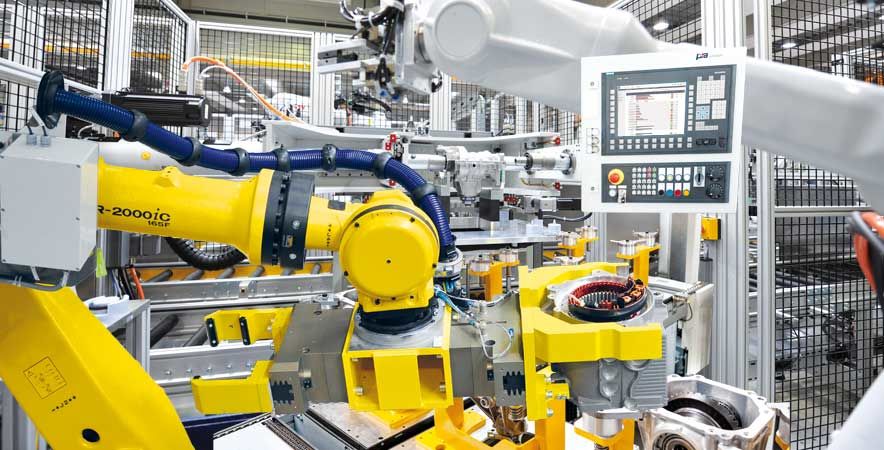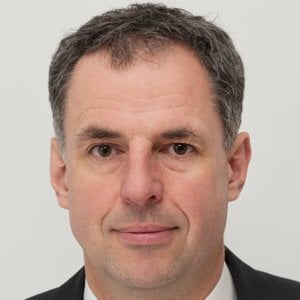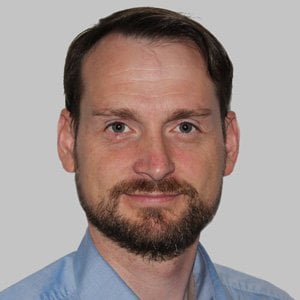we automate your e-world

The e-revolution in automotive engineering has drastic consequences for production with its' wide spectrum of variants and increasing quality requirements. Notably within the powertrain sector, which is currently, and continuously being supplemented by newly developed drive concepts for hybrid and electric drives. As a result of this pressure to innovate, adaptive concepts are becoming increasingly important. The focus of PIA is on flexible assembly systems as well as high-precision measuring and testing machines. To go into more detail about this, two e-mobility experts from PIA Austria, Markus Wagner (MW) and Robert Roth (RR) respond to the following questions.
How long has PIA dealt with e-mobility?
MW: In 2006 we received our first request for the production of an electric drive assembly line. Even before the economic crisis, e-mobility was a topic for our customers, even though it was not very attractive at the time due to the low number of units. In 2008 we accomplished the first project for an electric drive for GKN, the end customer being PSA (Peugeot Société Anonyme). Since 2013, the demand for e-mobility solutions has increased enormously. The reasons are mainly due changing political conditions as well as the diesel (emissions) scandal.
Who are PIA's customers?
RR: Our customers are both established OEMs and Tier 1 global suppliers. We have already successfully completed more than 10 projects in Austria and there are many more in the pipeline. At present, our primary market is Europe however Asia, especially China and NAFTA are catching up. Therefore, we are perfectly positioned with our Chinese locations in Ningbo and Suzhou as well as Evansville (USA) and Toronto (Canada).
Which components are manufactured on PIA systems?
MW: We specialize in the main assemblies of electric drives. These include the e-machine, gearbox as well as power electronics and batteries. Also within our systems are differentials, gear parts, clutch plates and hybrid modules all being assembled and tested. Our colleagues in Bad Neustadt (Germany) have been successful for years, especially in the field of power electronics and battery management.

Markus Wagner (Sales Manager)
PIA doesn't simply build assembly lines: We are an essential player in the future of mobility.
What is PIA's USP?
RR: PIA can map all processes from the laser welding of certain gear parts to the entire assembly including all measuring processes. In addition, we also supply the EOL tester (end-of-line), which carries out electrical measurements, performance tests and noise vibration harshness (NVH) tests. For certain processes (such as magnetizing or winding technology) we utilize an excellent partner network.
What are the challenges in the production of e-assembly systems?
MW: Here are 3 main points.
-
Flexibility: The systems must be highly flexible in terms of type and number of units. It may be that 3 different drives are to be produced on one system. However, you also have to be flexible when it comes to scalability. With low retries the system must also work with fewer operators and when demand is high, a gradual investment (modular extensions) must be possible.
-
Simultaneous Engineering: Due to short development times, the customers' products are not yet completely designed. Mostly we start in the quotation phase or in the project with B-sample parts (series maturity = D sample parts). This results in a high challenge with project handling in regards to change management, punctuality, ongoing product changes and fixed end dates. Nevertheless, due to our technical concepts and internal processes we respond very well and meet deadlines.
-
Another challenging issue is the high precision and cleanliness required due to the magnetic forces on the rotor.
What are the main differences to conventional powertrain systems?
RR: The number one difference is the component weight. The weight of the entire electric drive can be up to 130 kg. The weight of powertrain products is usually at max. 40 kg (except for manual transmissions). The number two difference would be completely different processes requiring active parts such as a stator and rotor.
Robert Roth (Sales Manager)
Our close association with customers and partners keeps us up to date with all the latest technology.

How does PIA stay up-to-date?
MW: Here we focus on the exchange between experts. Thanks to close unity with our customers, our partners and research institutes, our employees always keep up to date with the latest technology. Visits to trade fairs and attending conferences along with the transfer of knowledge within the PIA network, especially between the locations Grambach (Austria) and Bad Neustadt (Germany) complete the picture.
What percentage of sales fall on e-mobility projects?
RR: Currently e-mobility projects account for approximately 30 to 40 % of total revenue and continues to rise. Therefore, a strong increase in personnel is planned especially in this area.
Is there a special "e-mobility highlight"?
MW: Every e-mobility project is a highlight! A particular exciting project was the assembly line for American Axle & Manufacturing (AAM). The end customer was JLR (Jaguar Land Rover) with the vehicle I-PACE, named "World Car of the Year 2019". Additionally, we had an order for an assembly line for a electric drive. The drive is used in a electric minibus. This minibus is a universally expandable and deployable vehicle that can be equipped for both public transport and private and commercial transport tasks. Another example of PIA not only building assembly lines but playing an essential role in the future of mobility.